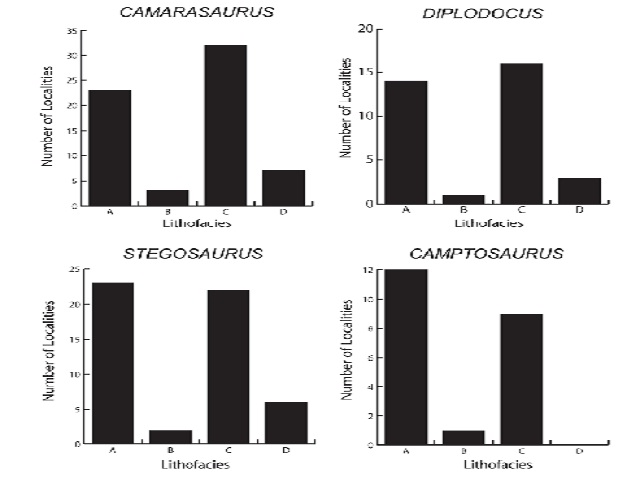Ecological Segregation of the Late Jurassic Stegosaurian and Iguanodontian Dinosaurs of the Morrison Formation in North America: Pronounced or Subtle
Keywords:
Stegosauria, Iguanodontia, Morrison Formation, Palaeoecology, Palaeoenvi-ronmentsAbstract
The Upper Jurassic Morrison Formation of western North America has yielded a number of specimens assigned to the ornithischian dinosaurs Stegosaurus and Camptosaurus, and many of these specimens come from channel sandstone deposits. Six new specimens are recorded mostly from channel sandstones as well. Indeed, early analyses of site occurrences (reducing the effects of large single-site samples) suggested that Stegosaurus and Camptosaurus were more often found in channel sandstone deposits than other common Morrison Formation dinosaurs such as Camarasaurus or Diplodocus. This also indicated the possibility of ecological segregation of the former two genera from other herbivorous dinosaurs of the Morrison. Revisiting this question with additional data suggests the pattern may not be as strong as it once appeared. Analysis of occurrence data indicates that Stegosaurus and Camptosaurus occur in channel sandstone deposits slightly more frequently than the two sauropods, but statistical analysis of this pattern by either localities or individuals indicates little significance to the trend. However, Camptosaurus appears more strongly associated with channel sandstone deposits relative to other dinosaurs than does Stegosaurus. These results suggest that any ecological segregation of these genera was moderate, but that, if present, the segregation was more pronounced in Camptosaurus.





